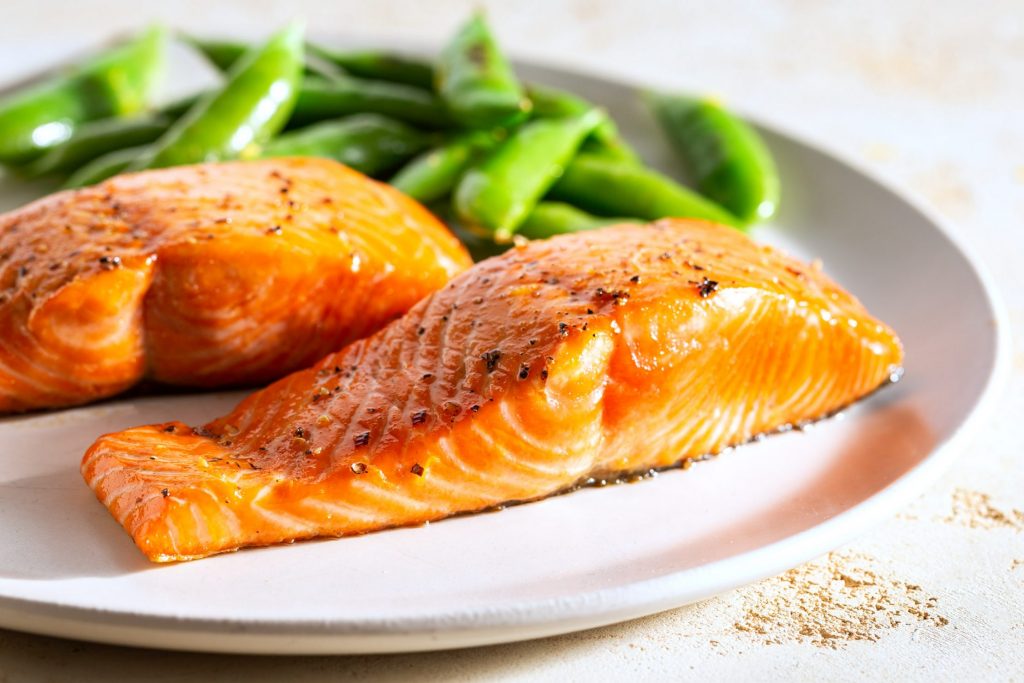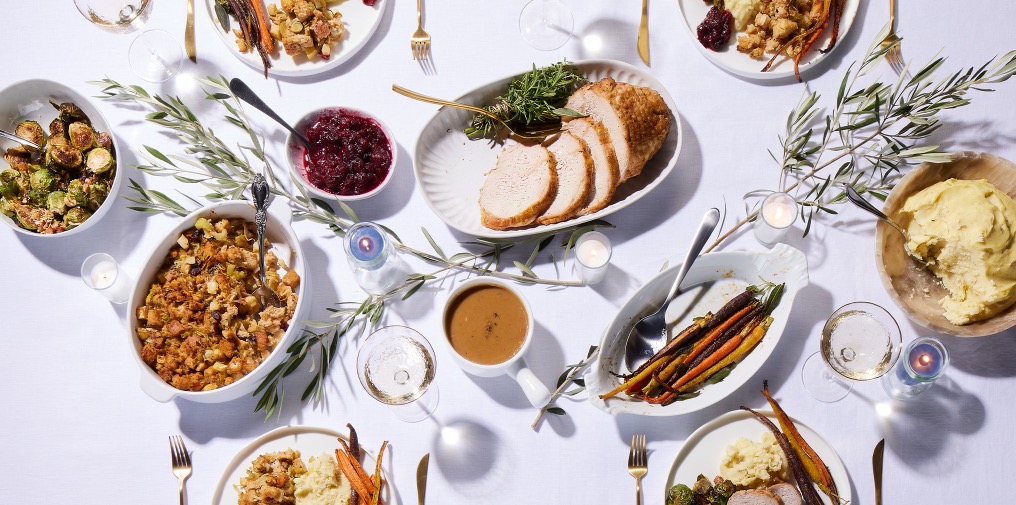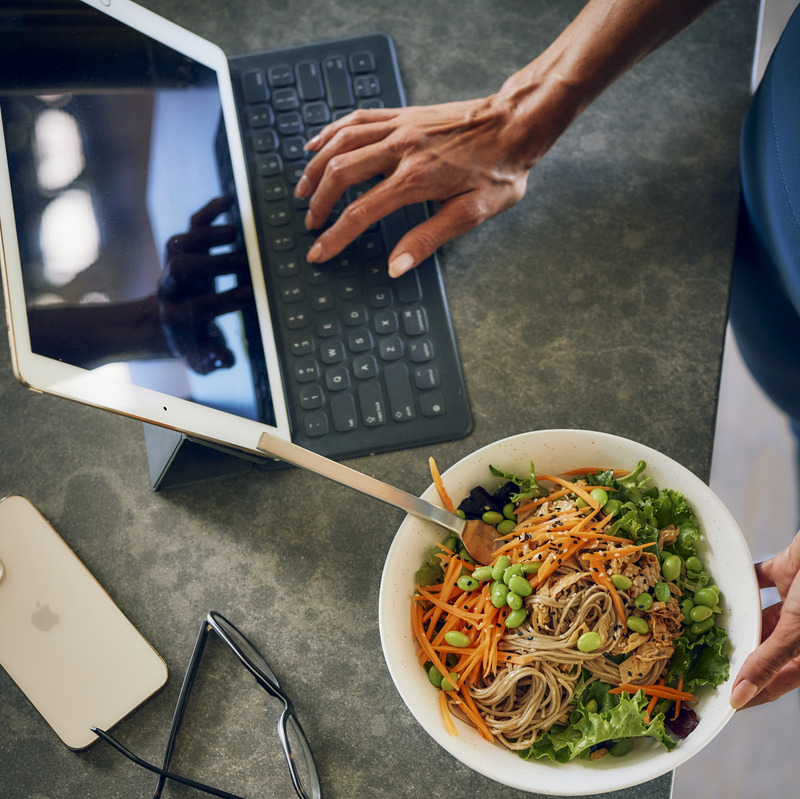Set the Table for a Healthy Feast

When it comes to sensible eating, it turns out that the plate itself is as important as what’s on it. Same with the size of your fork, the color of your dishes, even the tempo of the music. Sun Basket’s Director of Nutrition, Lindsey Kane offers some suggestions based on research by Dr. Brian Wansink at Cornell University’s Food and Brand Lab, on how to set the table and the mood for healthier eating.
Be strategic with serving pieces
The smaller the serving spoon, the less you’ll put on your plate, too. Designate your largest serving utensils for the most nutrient dense dishes, like roasted vegetables and sautéed Brussels sprouts, and reserve your smaller serving pieces for the marshmallow-topped sweet potatoes.
Big glass, small glass
Studies show the bigger the glass, the more you drink, so use your largest glasses for water. When it comes to cocktails, choose a tall and narrow glass. Most people serve themselves less when pouring a drink into a tall skinny glass, compared to using a short and stout glass of equal volume. Drinking wine? Opt for a white wine glass, which tends to be taller and more narrow than its wide-mouthed counterpart traditionally reserved for red wine. Studies have found wine drinkers pour 12 percent less wine when using a white wine glass.
Color a healthy plate
When the color of the plate is too similar to the shade of the food, it can be more difficult it is to gauge how much food is on it. Serve vegetables on plates of similar hues (green salad in a green bowl), but use white plates for chocolate cake, and other dark-colored foods that you want to enjoy in moderation.
Go small
The less surface area on your dinner plate, the less room there is for food, making it more difficult to pile on the potatoes. The same size portions served on smaller dinnerware tend to appear bigger than when spooned onto a larger plate. By using a smaller plate, you obtain a greater visual and physical sense of satisfaction—the perfect formula for enjoying more of less.
Keep the food away from the table
Studies have found that people eat 19 percent more food when a meal is served family-style at the table. Set up a buffet in the kitchen or on a side table instead. As one would predict, the farther away food is stationed, the more inconvenient a second helping becomes.
Mood lighting
Dim the lights, but not too much. Bright light (think fast food chains) promotes speed eating, while a softly lit room will get your guests to slow down and enjoy the meal. But don’t make it too dark. Eating in the dark can create a false feeling of “invisibility” which can mute inhibitions and promote overeating.
Play some slow tunes
As for music, we tend to eat to the beat. Choose some mellow tracks to encourage eating at a steady pace and then turn on the dance music after dinner and start burning off dessert.
Prioritize your line up
Give the most nutrient-rich, vegetable-centric dishes priority seating at the table. This encourages guests to commit the initial real estate on the plate to the healthiest choices right off the bat and limit the amount of space available for the richer dishes further down the line.
Shrink your silverware
Smaller utensils translate to smaller bites, which prolongs the meal, creating more time to chew, savor, enjoy, and digest your meal allowing you to feel full before going back for seconds. Yet another reason why smaller utensils increase satiety and satisfaction.
Artwork by ekströmdesign









